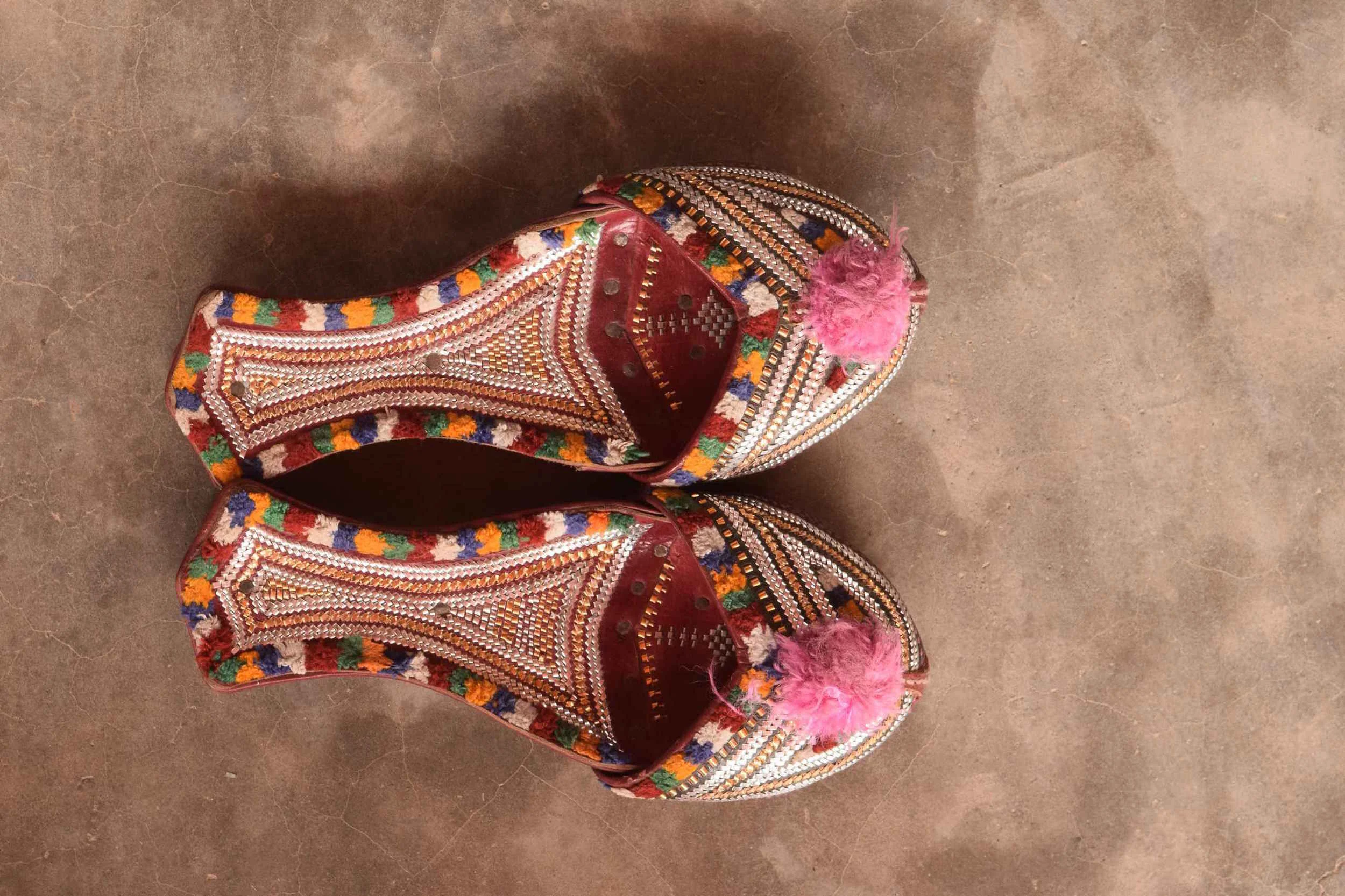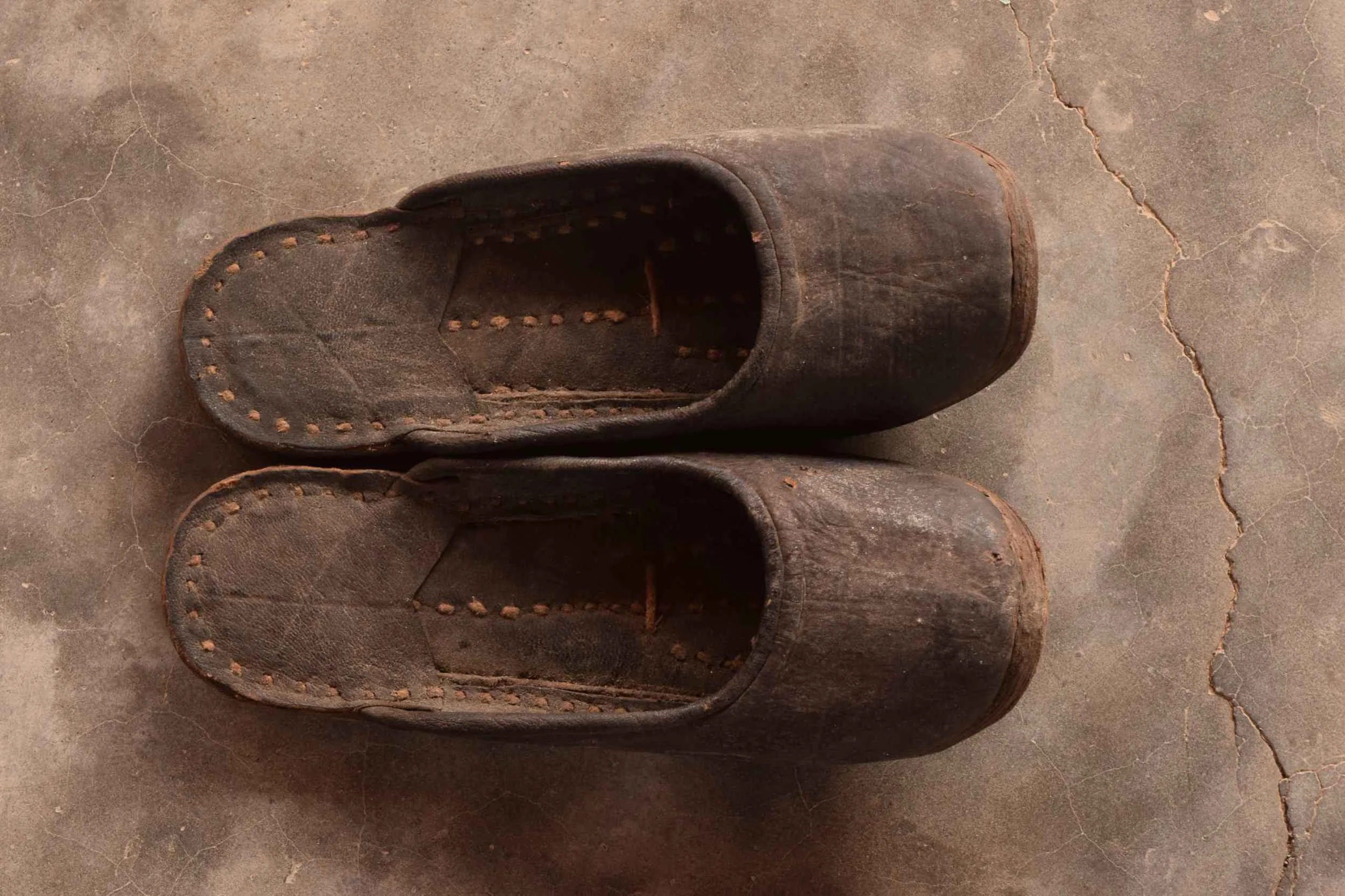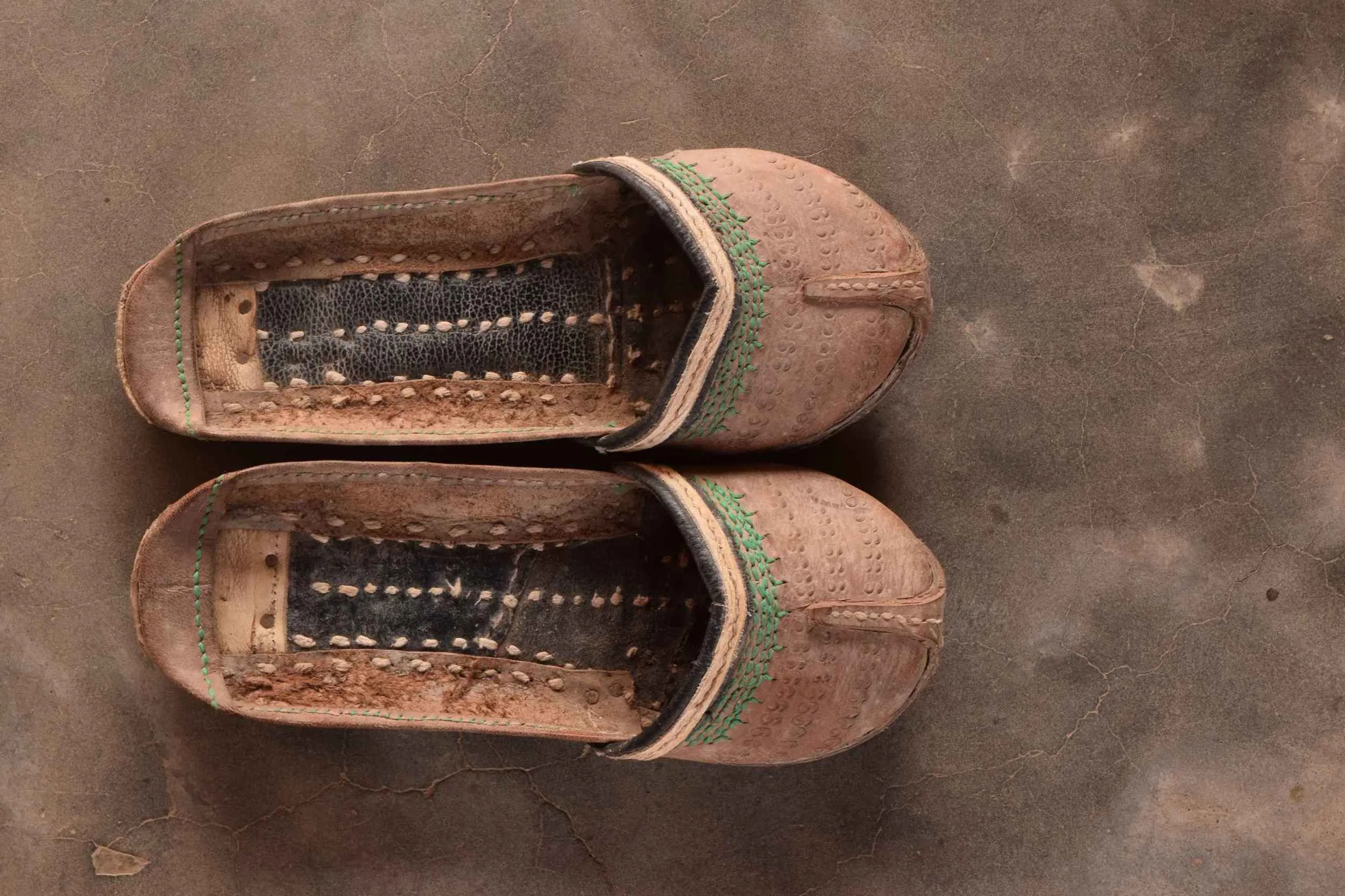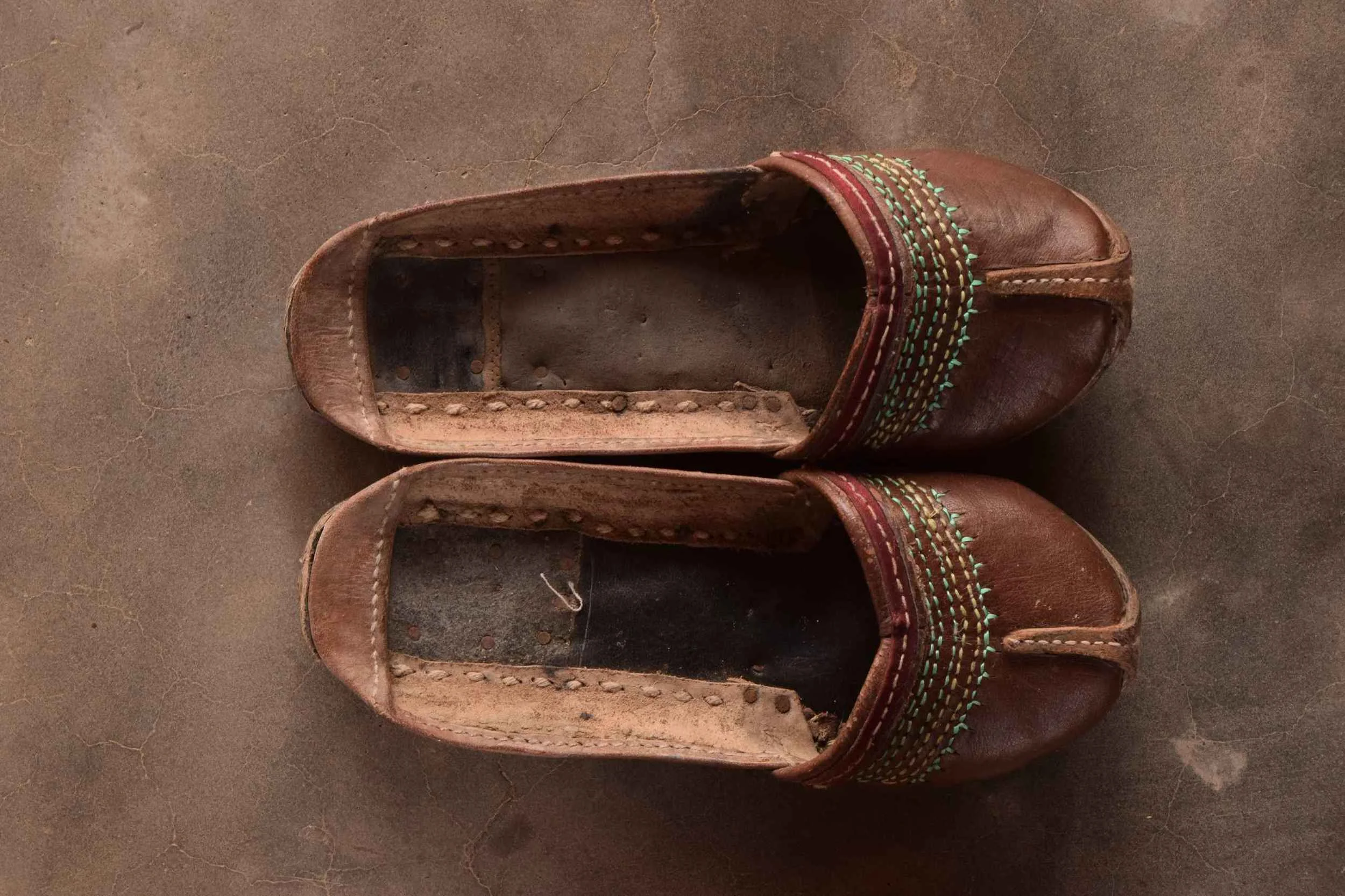
Varolo or Jhalani Jooti
Jhalani Jhootis are bedecked with intricate silver or zari work. Earlier Meghwars used real silver zari to adorn these shoes but these are now replaced with synthetic ones. The colorful torni border on the shoe was a favourite among the women. Both sides of the sole were etched by hand with floral designs and geometric shapes. These motifs varied according to the preferences of the community or the artisan. These shoes were popular amongst all the Kachchhi communities except the Rabaris, who preferred a more rugged style of work. In Banni, The leather artisan made a special pair of jhootis for the Maldhari bride. He would be welcomed with the shoes at the wedding to the beats of a drum and music. The shoes were blessed with offerings by guests and given to the artisan as a token of gratitude. Apart from this, he would be rewarded with either a baby cow, buffalo or goat, sometimes a camel. This system still exists in some parts of the Banni.

Sapaat or Chhappat
The word ‘Sapaat’ means flat. The shoes were simple and had a rough finish. They were popular among middle-aged and older women in East Kachchh. Rounded toe caps were worn mostly by the Wagadiya Rabaris (sheep and goat herders), Durbars or “upper caste” Hindus and Gadhvi (cattle herders and farmers). Slightly pointed toe-caps were popular among the Ahir (farming) women.

Sapaat or Chhappat
The word ‘Sapaat’ means flat. The shoes were simple and had a rough finish. They were popular among middle-aged and older women in East Kachchh. Rounded toe caps were worn mostly by the Wagadiya Rabaris (sheep and goat herders), Durbars or “upper caste” Hindus and Gadhvi (cattle herders and farmers). Slightly pointed toe-caps were popular among the Ahir (farming) women.

Sapaat or Chhappat
The word ‘Sapaat’ means flat. The shoes were simple and had a rough finish. They were popular among middle-aged and older women in East Kachchh. Rounded toe caps were worn mostly by the Wagadiya Rabaris (sheep and goat herders), Durbars or “upper caste” Hindus and Gadhvi (cattle herders and farmers). Slightly pointed toe-caps were popular among the Ahir (farming) women.

Sapaat
These flat shoes were worn by women across the Banni region. The pattern varied from other shoes in rest of the Kachchh with surface zari work.




